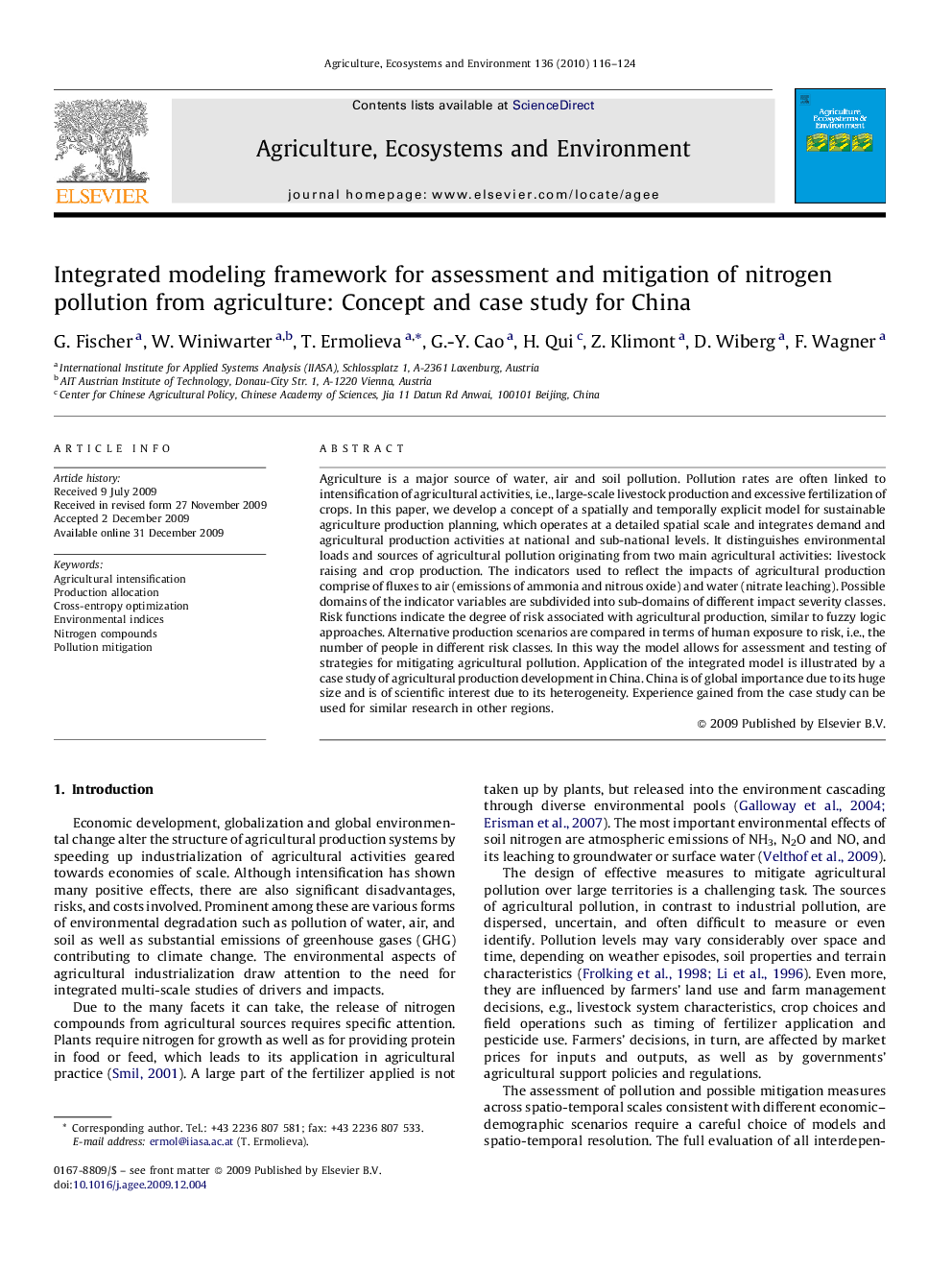| Article ID | Journal | Published Year | Pages | File Type |
|---|---|---|---|---|
| 2415192 | Agriculture, Ecosystems & Environment | 2010 | 9 Pages |
Agriculture is a major source of water, air and soil pollution. Pollution rates are often linked to intensification of agricultural activities, i.e., large-scale livestock production and excessive fertilization of crops. In this paper, we develop a concept of a spatially and temporally explicit model for sustainable agriculture production planning, which operates at a detailed spatial scale and integrates demand and agricultural production activities at national and sub-national levels. It distinguishes environmental loads and sources of agricultural pollution originating from two main agricultural activities: livestock raising and crop production. The indicators used to reflect the impacts of agricultural production comprise of fluxes to air (emissions of ammonia and nitrous oxide) and water (nitrate leaching). Possible domains of the indicator variables are subdivided into sub-domains of different impact severity classes. Risk functions indicate the degree of risk associated with agricultural production, similar to fuzzy logic approaches. Alternative production scenarios are compared in terms of human exposure to risk, i.e., the number of people in different risk classes. In this way the model allows for assessment and testing of strategies for mitigating agricultural pollution. Application of the integrated model is illustrated by a case study of agricultural production development in China. China is of global importance due to its huge size and is of scientific interest due to its heterogeneity. Experience gained from the case study can be used for similar research in other regions.
